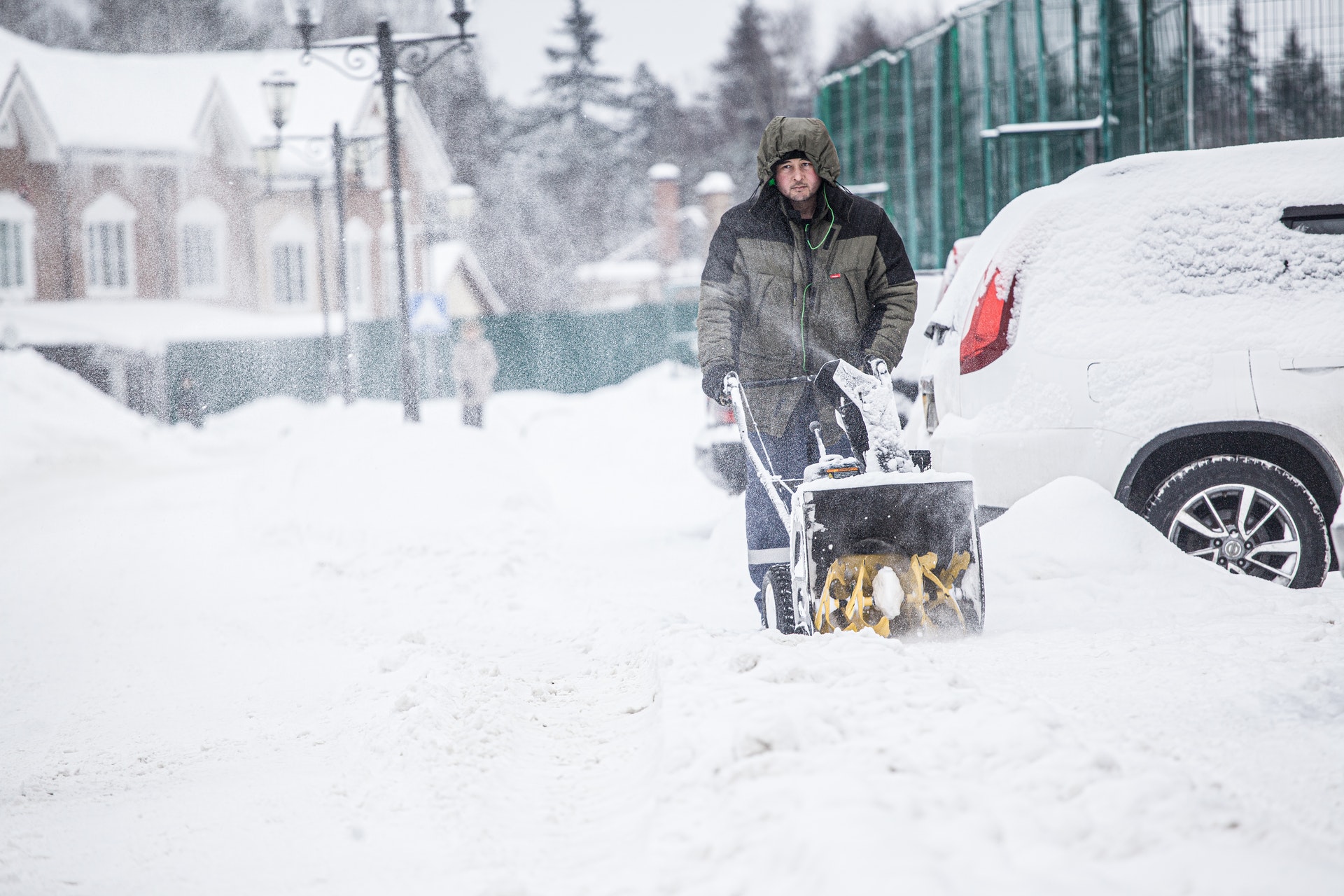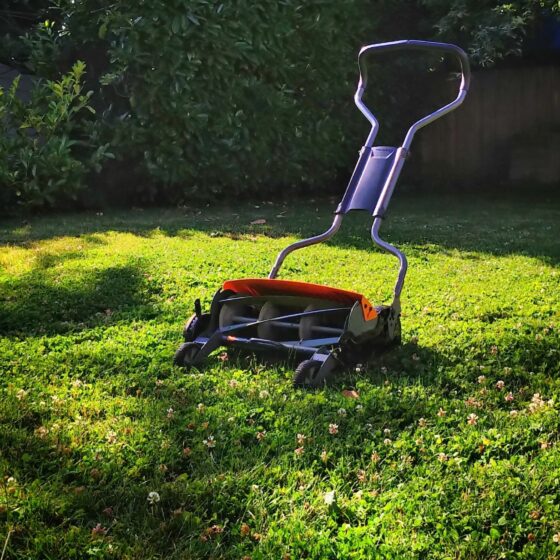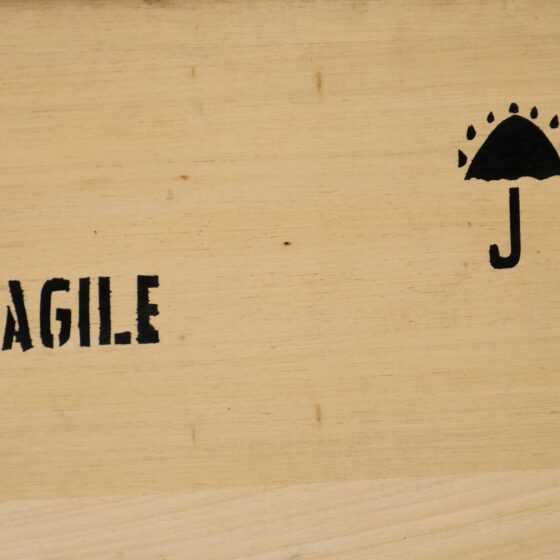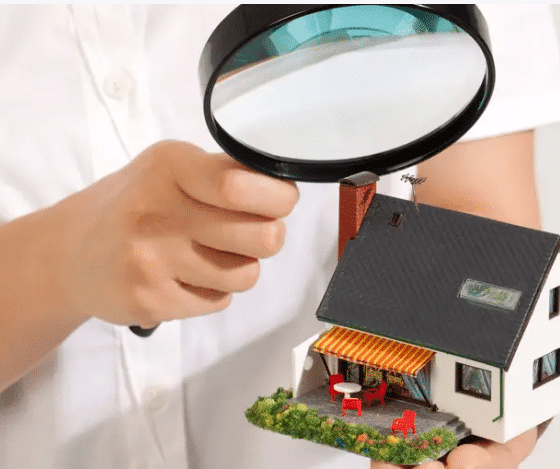If you’ve recently moved to snow country, chances are you’ve bought yourself a new snow blower for your driveway. These powerful machines are highly practical but also dangerous.
But worry not!
In this article, you’ll learn how to use a snow blower like a pro; no muss, no fuss!
Let’s get started!
Choose the Right Snow Blower
Not all snow blowers are created equal! In fact, there are various types and sizes of snow blowers to choose from. So how do you know which one is right for you?
Well, it depends on a few factors, like the size of your yard, the width of your driveway, and how much snow you normally get.
A single-stage snow blower should be sufficient for an average-sized property with light and dry snowfall. However, for larger estates with heavier, wetter snowfall, you should use a 2–stage snow blower instead.
Two-stage snow blowers are also a prime choice for gravel driveways since they won’t pick up gravel when they clear snow.
Larger areas also require quality cordless snow blowers for easy handling. And depending on the workload, you can get either an electric or gas-powered snow blower.
Before You Use a Snow Blower for the First Time
Mishandling a snow blower isn’t as rare as you may think; approximately 5,800 snow-blowing injuries occur each year in the US alone.
So, no matter what type of machine you have, you should always prep yourself and read the manual before switching it on.
Let’s start with some advice on how to use a snow blower for complete novices.
Read the Manufacturer’s Manual
Once you purchase a snow blower, take a good look at the accompanying manual. Different manufacturers have distinct guides on how to operate and maintain their snow blowers. Likewise, you’ll get a better understanding of the safety features and the general ins and outs of your model.
Check Out the Controls
Familiarize yourself with the controls before engaging your snow blower. This includes things such as: starting and stopping, adjusting the speed, and emergency shutdown. We cannot overstate how crucial this is when you use a snow blower for the first time.
Inspect for Any Defects and Manufacturing Errors
Take a closer look at your snow blower the moment it arrives and make sure there are no visible cracks or damage of any kind. Inspect the auger, chute, and impeller to see whether they’re all in mint condition. Otherwise, contact the manufacturer and ask for repairs; the machine could be a safety hazard in its current state.
When Should I Start Snow Blowing?
The general rule of thumb is to wait for optimal conditions, here’s to name but a few:
Follow the Forecast
If possible, try to time your snow blowing during light snowfall when there’s little wind. Not only will this make the job much easier but it’ll also make things a lot faster. Also, we recommend using protective show gloves and similar equipment for operating machinery in winter weather conditions.
How Many Inches of Snow Before You Use a Snowblower?
You can use your snow blower for any snow depth up to twelve or nine inches.
However, for a snow buildup of two inches (or less), there’s a good chance you won’t be satisfied with the results. In this case, it would be better to use a quality cordless leaf blower if you have one.
Leaf blowers are more maneuverable, fire up faster, and remove thin layers of snow more efficiently. Therefore, don’t go reaching for your snow remover straight away! Wait for the minimum snow buildup for the snowblower to work its magic.
Conversely, if the snow is thicker than twelve inches, use a shovel instead.
Types of Snow
The effectiveness of your machine also depends on the snow’s consistency; don’t expect the same results with wet snow as with dry, flaky snow.
In fact, it’s not recommended to use a snowblower in wet snow if it’s a single-stage type. This can wear your snowblower out, break its drive belts, or make it unusable by clogging it.
Note that wet snow is heavier than dry snow and harder to eliminate unless you use a two-stage snow blower. Hence, to avoid damaging your machine, check whether the snow sticks to the ground (in other words, whether it’s wet) before you start blowing.
Don’t Wait for Clear Skies
Don’t wait for your driveway to get buried under thick layers of snow before cleaning it. If a huge snowfall is on its way, grab the blower as soon as there’s a two-inch layer of snow.
Remember, medium-quality snow blowers work best when there’s between six and nine inches of snow, even though some powerful snow blowers can handle up to twelve inches of snow.
How to Operate a Snow Blower Step-by-Step
1. Clear Out the Area
First, make sure the area you’ll be working on is clear of any obstacles. Do this the moment you see the first snowflake, as once the snow starts amassing on the ground, you won’t be able to see what’s underneath.
The best way to snow blow a driveway is to stay clear of anything that can make you slip, fall, or break the shear pins on your machine.
In other words, remove things like rocks, sticks, extension cords, half-buried newspapers, and anything else that can get in the way of your snow blowing.
2. Check the Fuel and Oil Tanks
Most blowers are equipped with a dipstick for oil level monitoring. Checking the fuel tank before igniting the engine is also advised.
To ease the ignition, use a more volatile winter blend fuel in place of your usual lawnmower one.
3. Position the Blower Properly
A big part of how to snow blow a driveway successfully falls on prepping your machine for maximum efficiency. Here’s how to do it:
- Make sure the discharge chute is pointing in the direction you want the snow to go; for windy weather, choose the direction of the wind, for instance.
- Put the diverter in a fully raised position for maximum throw. This way, you’ll avoid going over the snow twice.
- Turn the rotation to full speed and walk at a slower pace to throw smaller lumps of snow further away to the side.
- Leveling the skid shoes (snow blower feet) with the ground will let you “glide” over the surface of the snow.
4. Choose the Right Dumping Site
If you’re about to use a snow blower for the first time, know that you need to pick a dumping site to dispose of all that snow you’re blowing. A word of advice — don’t stack it near your house. Once it starts to melt, your walls will get damaged due to moisture.
The same goes for dumping snow near the street; you could potentially block garbage removal from passing. Instead, opt for a more suitable dumping site in your yard, preferably away from smaller plants; next to tree trunks, for example.
5. Plan Out a Pattern
The best way to snow blow a driveway is to start from the middle and work your way to the sides in a concentric circle.
Despite there being plenty of other ways to eliminate snow from your driveway, this is the most optimal one. Just make sure the chute always points in the same direction.
6. Start Your Snow Blower
After going over the safety checklist and clearing a path, you’re now ready to start your snow blower. The following steps will allow you to use a gas snow blower effectively:
- First, make sure the power switch is in the “off” position.
- After that, close the choke valve if your snow blower was stored in a cold place.
- While working, go full throttle for peak efficiency; also to save fuel.
- Prime the engine by depressing the primer bulb a few times.
- Turn on the fuel valve and pull on the starter cord.
- Once the engine runs smoothly, open the choke.
If you’ve followed all of the above, the snow blower should jolt into action without delay. If not, consult the troubleshooting section of your manual.
If you use an electric snow blower, simply plug it into an outdoor outlet and push the start switch.
7. Start Clearing Snow
Begin by moving the snow blower forward at a steady pace. As you move, the auger will spin, and the snow will be drawn into the machine. The impeller will then throw the snow out of the discharge chute, leaving you with a clean driveway.
And remember — don’t pressure yourself too much if you can’t get the hang of it straight away. With just a little bit of practice, you’ll learn how to use a snow blower like a pro in no time!
8. Take Care of Your Snow Blower
One of the most frequent problems with snow blowers is clogging. Luckily you can prevent it with a few easy steps:
- Get your machine out of the snow and run it for a few more minutes after you’ve done. This will flush any leftover snow in the chute.
- Use a cleaning tool to keep the machine from clogging. Never use your hands, or you risk getting frostbite.
- Store your snow blower in a dry and secure place like a garage or shed.
- Wrap the snow blower to keep it from freezing.
Conclusion
So, there you have it — a complete guide on how to eliminate snow from your premises! Keep these snow-blowing tips in mind, and it’ll be smooth sailing from here on.
Now get out there and start clearing that snow!
FAQ
How much snow do you need to use a snowblower?
For snow layers under 2’’, you can probably use a leaf blower instead as it’s more maneuverable. However, for snow that’s between six and nine inches deep, you can get your snow blower out!
Can I use a snow blower on a gravel driveway?
Yes, provided you have a two-stage model. These blowers can suck up the snow without picking up too much gravel, unlike their one-stage counterparts that get clogged easily.
How do you start a cold snowblower?
Close the choke valve to help jump-start gas-fueled snow blowers in cold weather. This will ignite the fuel mixture in the combustion chamber faster. Conversely, starting an electric snow blower is as easy as plugging the machine and switching it on.
Where should the choke be on a snowblower?
The choke control should be in the closed (choke) position before starting your snow blower’s engine. However, once you successfully start the machine, you should switch the choke to the open position to prevent flooding the engine.
Where should I place my snowblower in the winter?
Preferably you should store your snow blower in a warm and dry place during the winter months to avoid the impeller freezing up. Tarping it will also help prevent this. In case you don’t have a shed or garage, it’s best to put your snow blower in a storage unit with optimal conditions (check above).
Does a snow blower work on wet snow?
Yes, provided you take it slow. Namely, single- and two-stage snow blowers can handle wet snow with moderate success. However, unless you have a large, three-stage machine, you’re going to have a hard time.
Be sure to check how to use a snow blower beforehand as it can be quite dangerous; especially in these conditions.













